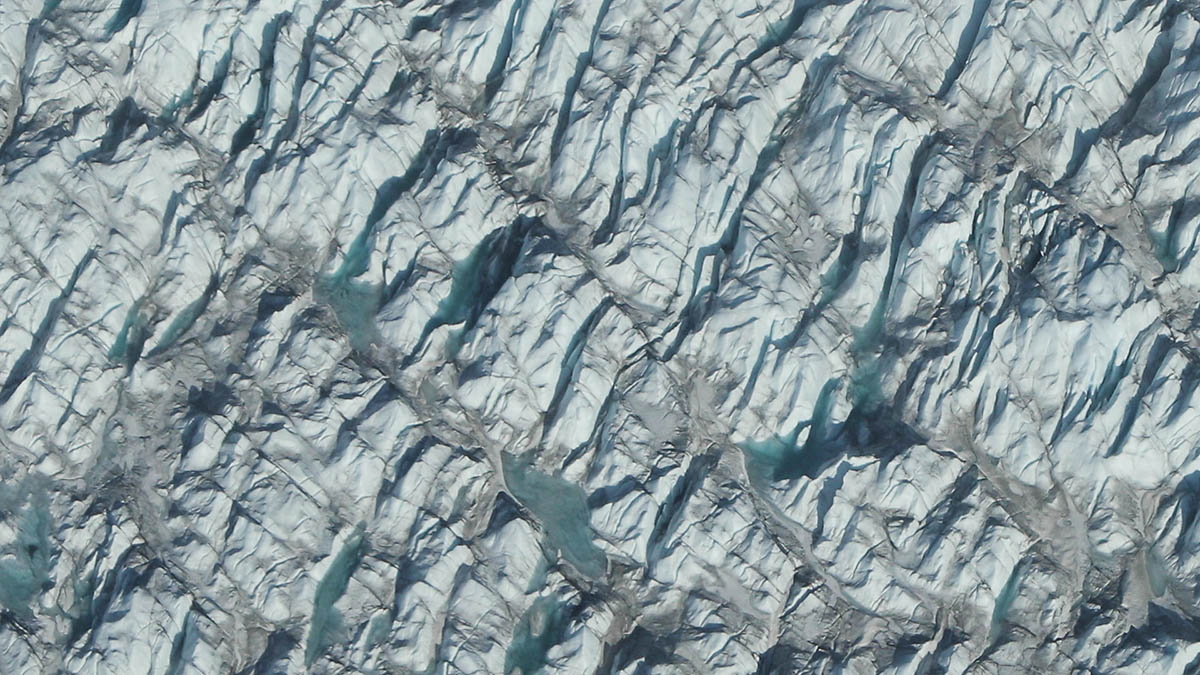The Greenland Ice Sheet is the second-largest body of ice in the world, covering roughly 650,000 square miles of Greenland’s surface. If it melts completely, it could contribute up to 23 feet of sea level rise, according to a new study using data from NASA’s Operation IceBridge. (NASA / Jefferson Beck)
Home The Greenland Ice Sheet is the second-largest body of ice in the world, covering roughly 650,000 square miles of Greenland’s surface. If it melts completely, it could contribute up to 23 feet of sea level rise, according to a new study using data from NASA’s Operation IceBridge. (NASA / Jefferson Beck) The Greenland Ice Sheet is the second-largest body of ice in the world, covering roughly 650,000 square miles of Greenland's surface. If it melts completely, it could contribute up to 23 feet of sea level rise, according to a new study using data from NASA's Operation IceBridge. (NASA / Jefferson Beck)
The Greenland Ice Sheet is the second-largest body of ice in the world, covering roughly 650,000 square miles of Greenland’s surface. If it melts completely, it could contribute up to 23 feet of sea level rise, according to a new study using data from NASA’s Operation IceBridge. (NASA / Jefferson Beck)


